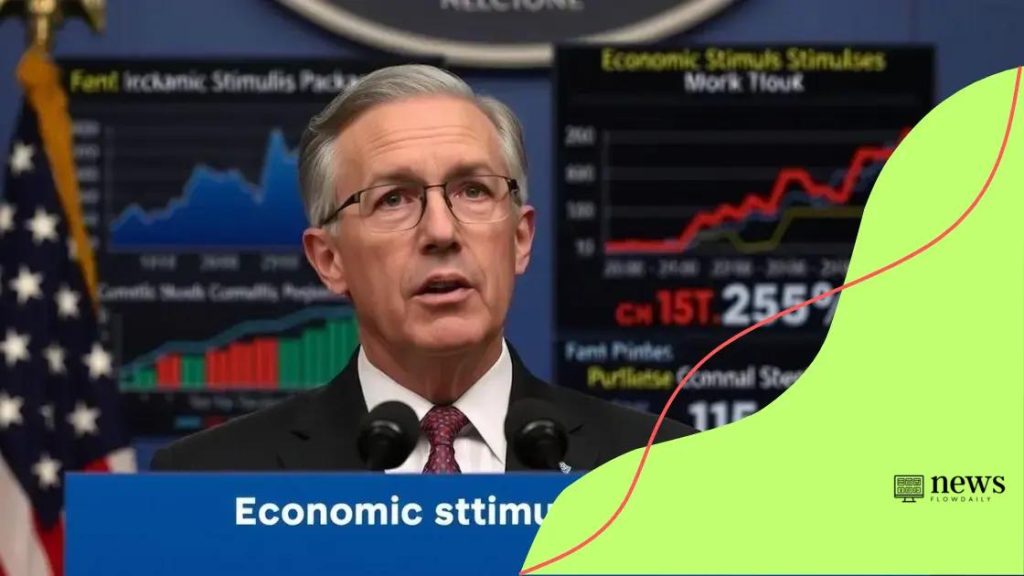Economic stimulus packages: Boosting recovery and growth

Economic stimulus packages are government initiatives aimed at boosting economic activity during downturns by providing financial support, creating jobs, investing in infrastructure, and promoting sustainability and equity.
Economic stimulus packages have become essential tools for governments aiming to boost recovery during financial downturns. Have you ever wondered how these initiatives impact everyday life? Let’s dive in.
Understanding economic stimulus packages
Understanding economic stimulus packages is vital for grasping how governments attempt to kickstart their economies. These programs are designed to provide immediate financial support during downturns, helping individuals, businesses, and communities recover more quickly.
Stimulus packages often include various components, such as cash transfers, tax relief, and public spending on infrastructure projects. By delivering direct financial assistance, governments aim to boost consumer spending and stimulate economic activity.
Key elements of stimulus packages
A successful stimulus package generally features several key elements:
- Direct payments: Cash assistance to households, which can increase spending
- Tax cuts: Reductions in individual and corporate taxes to encourage investment
- Infrastructure investment: Funding for roads, bridges, and schools that create jobs
- Support for businesses: Loans and grants to keep businesses afloat during tough times
These elements work together to create a ripple effect throughout the economy. When consumers have more disposable income, they tend to spend more, which in turn increases demand for goods and services. This demand can lead to job creation and an overall boost in economic growth.
The impact of historical stimulus packages
Historically, stimulus packages have yielded mixed results. For example, the 2008 financial crisis prompted a significant stimulus response, which included the American Recovery and Reinvestment Act. This initiative led to job creation and economic growth in the years following the recession. However, some critics argue that not all stimulus measures are effective, emphasizing the importance of targeted strategies.
Understanding economic stimulus packages involves recognizing their potential for both immediate and long-term benefits. By strategically designing these packages, governments can address economic needs while fostering resilience for future challenges.
Historical examples of impactful stimulus
Historical examples of impactful stimulus highlight how governments have effectively used fiscal measures to aid recovery. By examining these examples, we can better understand what strategies work best in times of economic distress.
One significant instance was the New Deal during the Great Depression. Introduced by President Franklin D. Roosevelt in the 1930s, it featured a series of programs and public works projects aiming to provide jobs and stimulate economic growth. By creating infrastructure jobs, the New Deal helped millions of Americans find employment.
The American Recovery and Reinvestment Act
Another vital example is the American Recovery and Reinvestment Act of 2009. This stimulus package aimed to combat the effects of the 2008 financial crisis. It included tax cuts, funding for infrastructure projects, and support for education, healthcare, and renewable energy. The act created or saved millions of jobs, illustrating how targeted government spending can revitalize a struggling economy.
- Direct payments: Provided households with immediate financial relief
- Investment in transportation: Upgraded roads, bridges, and public transit
- Support for innovation: Increased funding for research and technology
In addition, the COVID-19 relief packages serve as a modern example of stimulus effectiveness. Programs like the CARES Act aimed to deliver fast and broad economic relief to individuals and businesses. Through direct payments, unemployment benefits, and small business loans, the government helped reduce the economic impact of the pandemic.
These historical examples show the effectiveness of well-planned economic stimulus packages. They can create jobs, support communities, and foster overall economic stability when implemented correctly.
How stimulus packages affect the economy

How stimulus packages affect the economy is a crucial topic, especially during times of economic uncertainty. These packages can have profound impacts on different sectors of the economy and society as a whole.
One of the primary effects of stimulus packages is the immediate boost in consumer spending. When individuals receive financial aid, they are more likely to make purchases, which drives demand for goods and services. This increased demand encourages businesses to hire more workers and expand their operations, creating a positive cycle of growth.
Job creation and retention
Stimulus packages often focus on job creation and retention, which are vital for economic recovery. By funding public works projects, governments can create thousands of jobs in sectors like construction and infrastructure. These jobs not only provide income to workers but also enhance community services and facilities.
- Infrastructure improvement: Upgraded roads and bridges lead to better transportation.
- Support for small businesses: Loans and grants help keep local businesses afloat during tough times.
- Investment in education: Funding for schools can improve workforce skills.
Moreover, stimulus funds often target programs designed to support low- and middle-income families. By directing resources to these groups, the government helps to reduce inequality and promote social stability. This, in turn, fosters a healthier economy where more individuals can participate and contribute.
The ripple effect on the economy
The ripple effect of stimulus packages extends beyond immediate benefits. For example, when more people are employed and spending increases, businesses thrive, leading to higher tax revenues for the government. These funds can then be reinvested into essential public services and programs.
However, it is essential to consider potential drawbacks, such as inflation. If a stimulus package injects too much money into the economy too quickly, it can lead to rising prices. Therefore, careful planning and execution of these packages are crucial to achieving the desired outcomes.
Key components of successful stimulus plans
Key components of successful stimulus plans are essential for ensuring effectiveness and maximizing economic impact. Understanding these components allows governments to create tailored packages that address specific challenges.
First, direct financial aid plays a crucial role in stimulating consumer spending. When people receive checks or cash transfers, they are more likely to purchase goods and services. This increase in demand can invigorate local economies and promote business growth.
Investment in infrastructure
Another vital component is investment in infrastructure. By funding projects like roads, bridges, and public transit, governments can create jobs and improve essential services. Infrastructure upgrades not only enhance daily life but also support economic activity in the long run.
- Job creation: Directly provides employment opportunities.
- Long-term growth: Improved infrastructure supports future business expansion.
- Community benefits: Enhanced public facilities improve quality of life.
In addition to these key components, support for small and medium-sized enterprises (SMEs) is vital. Providing loans and grants to businesses helps them survive during tough economic times. SMEs are critical to job creation and innovation, making their stability essential for overall economic health.
Focus on equity
A successful stimulus plan should also prioritize equity. Targeting low- and middle-income families ensures that the aid reaches those who need it most. By addressing disparities, governments can create a stronger, more inclusive economy whereeveryone has the opportunity to thrive.
Public health considerations are also important. Incorporating funding for healthcare systems can help ensure that citizens remain healthy and able to contribute to the economy. A robust healthcare system not only saves lives but also enhances productivity.
Future of economic stimulus measures
Future of economic stimulus measures looks to adapt to the changing global landscape. As economies evolve, the methods and strategies around stimulus packages must also innovate to effectively support growth and recovery.
One important aspect of future measures is the inclusion of technology in economic planning. Digital tools can help governments analyze data and understand the needs of their populations more effectively. By utilizing artificial intelligence and big data, policymakers can create targeted programs that address specific issues.
Incorporating sustainability
An increasing focus on sustainability in economic stimulus is expected. Future stimulus plans may prioritize green energy projects, eco-friendly infrastructure, and initiatives that tackle climate change. This shift not only stimulates job creation but also helps protect the environment for future generations.
- Investment in renewable energy: Supporting solar, wind, and other sustainable energy sources.
- Green infrastructure: Projects that promote public transportation and energy-efficient buildings.
- Job training programs: Preparing the workforce for new green economy sectors.
Furthermore, addressing income inequality will likely become a key focus in future stimulus measures. Policymakers may create programs that specifically help marginalized communities recover and thrive. This approach promotes a more equitable economic recovery that benefits everyone.
Global cooperation
As the world becomes more interconnected, international collaboration on economic stimulus may become vital. Countries can share best practices, resources, and strategies to address global challenges. This cooperation could lead to more effective measures that benefit both local and global economies.
Ultimately, the future of economic stimulus measures will depend on a combination of innovation, sustainability, and inclusivity. By adapting to new challenges and prioritizing long-term goals, governments can foster resilient economies that can withstand future shocks.
FAQ – Frequently Asked Questions about Economic Stimulus Packages
What are economic stimulus packages?
Economic stimulus packages are government initiatives designed to boost economic activity during periods of downturn by providing financial support and incentives to individuals and businesses.
How do stimulus packages affect employment?
Stimulus packages help create and preserve jobs by funding infrastructure projects and providing support to businesses, which encourages hiring and retention.
What key components make up a successful stimulus package?
A successful stimulus package typically includes direct financial aid, investment in infrastructure, support for small businesses, and a focus on equity and sustainability.
How can future stimulus measures address climate change?
Future stimulus measures can prioritize funding for green projects, renewable energy initiatives, and improvements in energy efficiency, contributing to a more sustainable economy.





